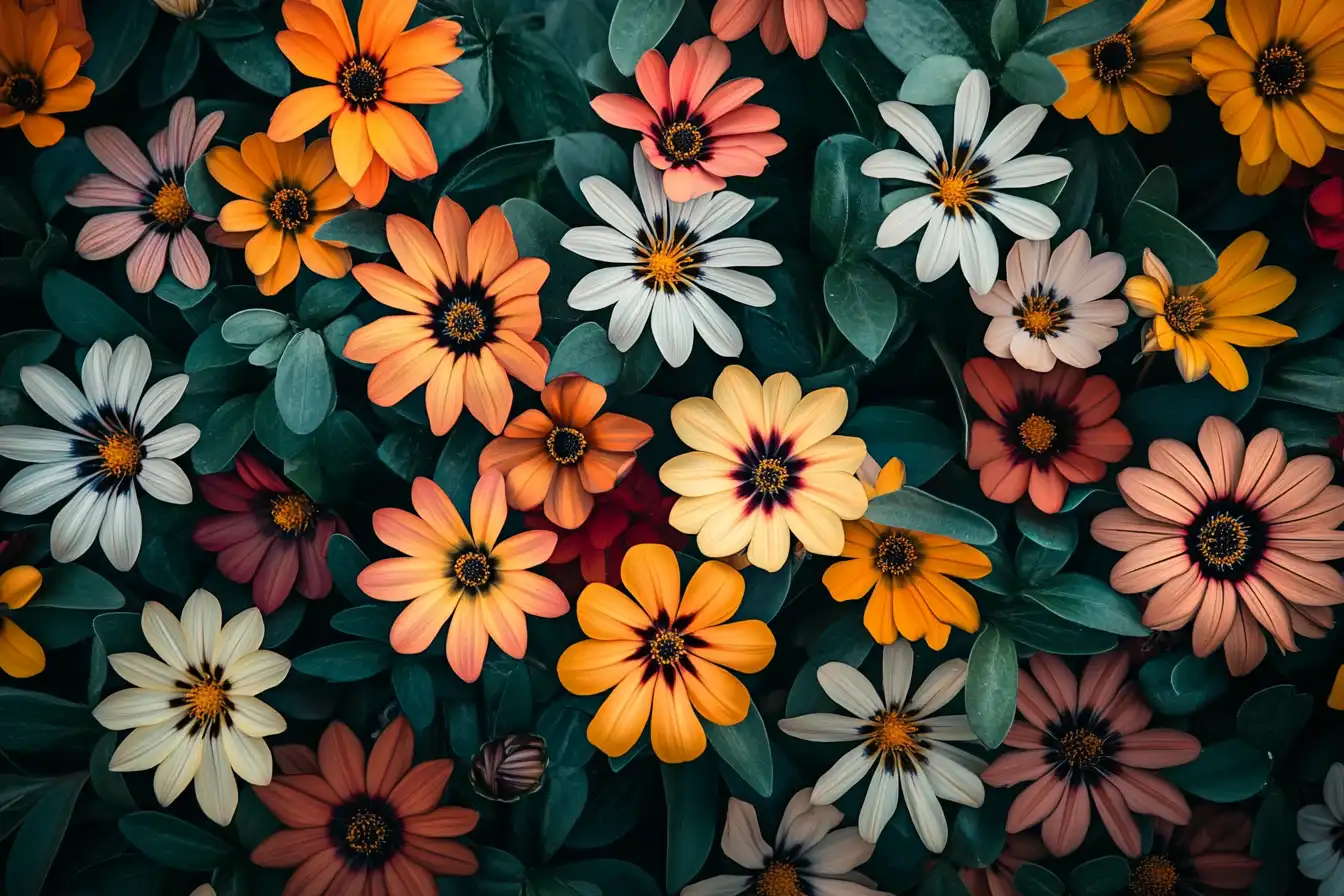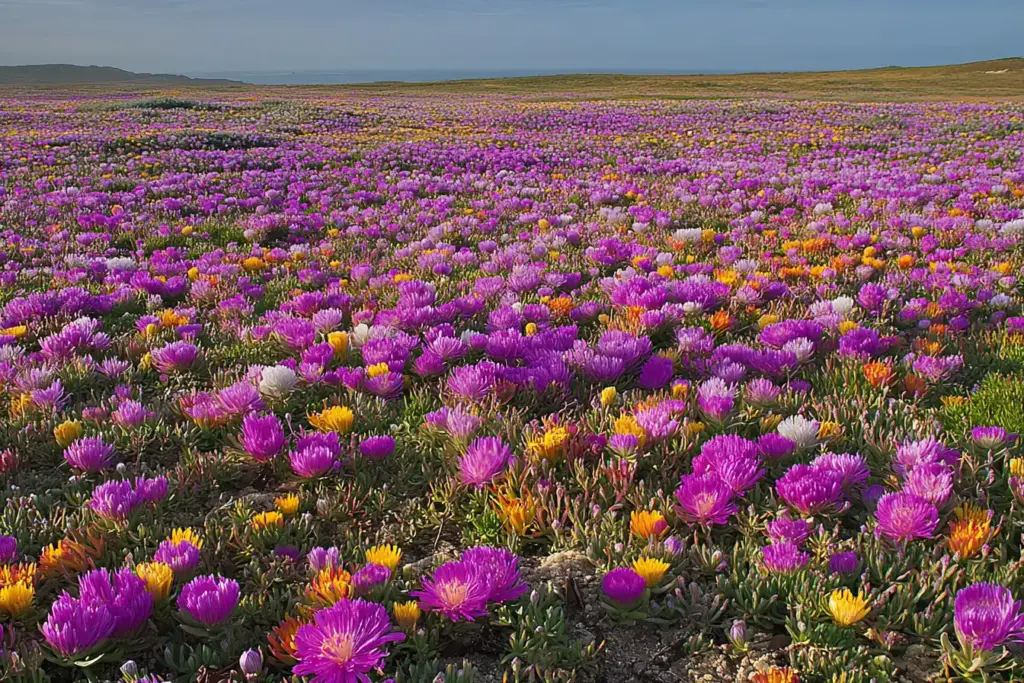Looking for garden solutions that can handle intense sun and high temperatures? Ground cover plants are not just problem-solvers for tricky areas—they also bring beauty and resilience to your landscape. Whether you’re dealing with bare patches, steep slopes, or tired of mowing grass, ground covers are a low-maintenance way to create a lush, green space that thrives in full sun and heat.
In this guide, we’ll explore 10 heat-tolerant ground cover plants that love the sun and offer benefits like:
- Weed suppression
- Soil erosion control
- Drought resistance
- Low maintenance beauty
Let’s dig into the top choices for sunny, sizzling spaces.
🌱 Benefits of Ground Cover Plants
Before diving into the plant list, it’s worth highlighting why ground covers are such an asset in hot, sunny gardens:
✅ Prevent Soil Erosion
Their spreading roots anchor the soil, helping to prevent erosion on slopes and loose terrain.
✅ Natural Weed Blockers
They crowd out weeds by covering bare ground, reducing your need for weeding or herbicides.
✅ Moderate Soil Temperature
These plants act like natural insulation—cooling the soil during hot days and protecting roots from temperature swings.
✅ Boost Curb Appeal
With varying textures, colors, and bloom times, ground covers add richness and charm to garden beds, paths, and borders.
🌸 1. Ice Plant (Delosperma spp.)
Primary benefits: Colorful blooms, drought tolerance, coastal resilience
USDA Zones: 5–9
If you’re dreaming of a vibrant carpet of flowers that doesn’t flinch in the heat, ice plant is a top contender. This sun-loving succulent forms dense mats of silvery-green foliage and bursts into vivid bloom from late spring through summer.
Why it shines:
- Produces daisy-like flowers in shades of pink, purple, yellow, or white
- Thrives in rocky, poor soil and coastal conditions
- Needs excellent drainage to avoid root rot
- Virtually maintenance-free once established
Popular Varieties:
- Delosperma cooperi – Bright purple blooms
- Delosperma nubigenum – Sunny yellow flowers
- Delosperma ‘Red Mountain’ – Eye-catching magenta petals
Pro tip: Use in rock gardens, slopes, or any spot where color and toughness are both required.
💙 2. Blue Star Creeper (Isotoma fluviatilis)
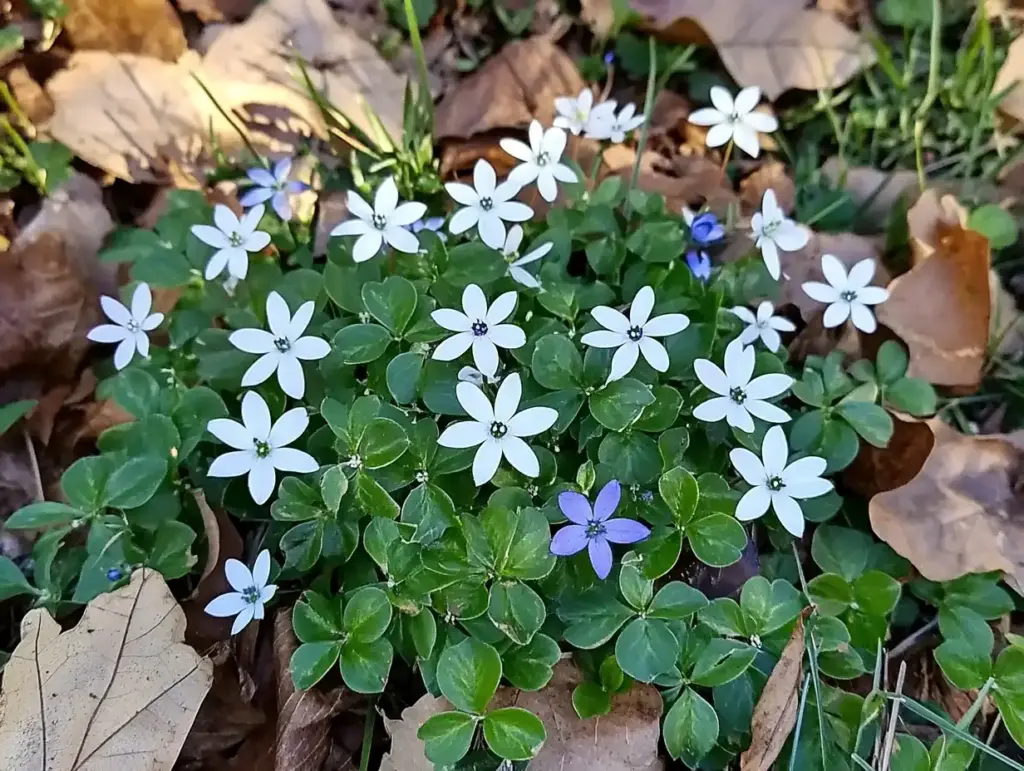
Primary benefits: Low profile, soft texture, charming blooms
USDA Zones: 5–9
If you’re looking to soften the spaces between stepping stones or fill narrow gaps, Blue Star Creeper is a fantastic choice. This low-growing perennial forms a dense, green mat just a few inches high and stays lush most of the year.
Why it shines:
- Adorned with tiny star-shaped blue-violet flowers from late spring through summer
- Spreads steadily without becoming invasive
- Holds up well to light foot traffic
- Deer-resistant and relatively pest-free
Growing Tips:
- Prefers cooler full sun or partial shade in warmer zones
- Requires regular watering at first, but becomes drought-tolerant once established
Popular Varieties:
- ‘Heavenly Blue’ – Larger flowers for more visual impact
- ‘Minima’ – Tiny, compact leaves
- ‘Alba’ – Features delicate white blooms
Great for: Garden pathways, patios, or shaded sunny spots that need a touch of charm.
🌼 3. Roman Chamomile (Chamaemelum nobile)
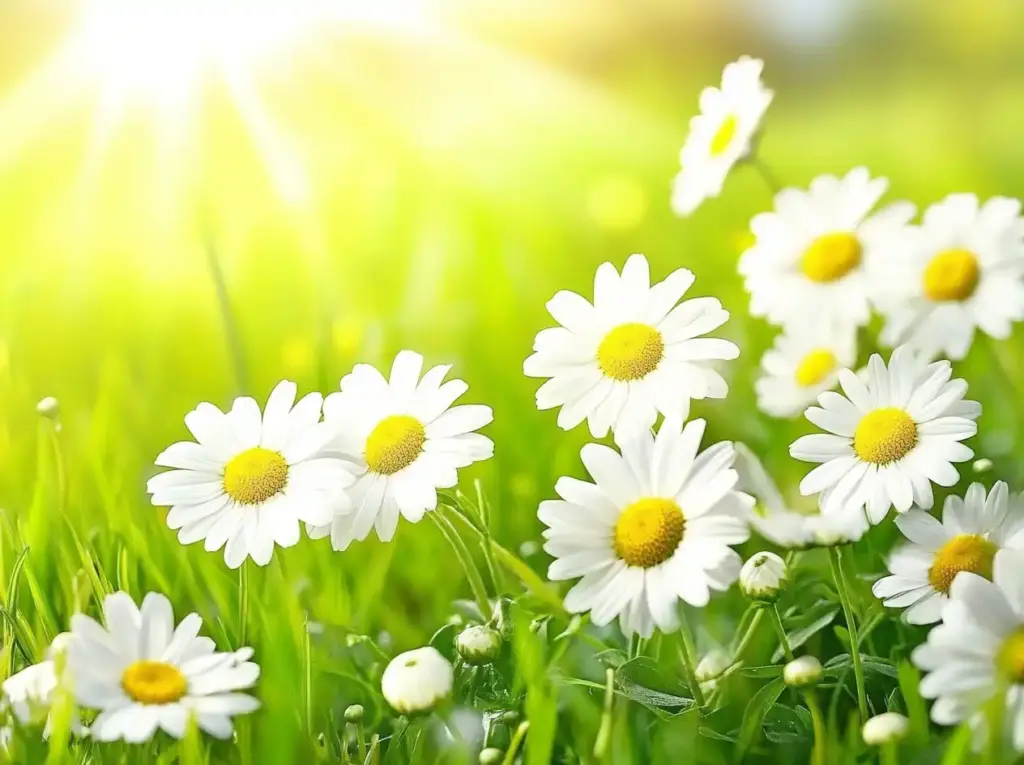
Primary benefits: Fragrant foliage, charming flowers, natural pest resistance
USDA Zones: 4–9
Roman Chamomile is more than just a tea-time herb—it’s also a fantastic ground cover for sunny areas, especially in cooler regions. With its finely textured leaves and apple-scented fragrance, it adds a sensory layer to your garden while staying low and lush.
Why it shines:
- Forms a dense mat of fern-like foliage, staying under 6 inches tall
- Produces small white daisy-like flowers from early to late summer
- Tolerates light drought and occasional shade once established
- Naturally resistant to deer and common pests
Popular Varieties:
- ‘Treneague’ – A non-flowering variety ideal as a living lawn substitute
- ‘Flore Pleno’ – Features double white blooms for extra charm
Ideal for: Cottage gardens, herbal pathways, or softening hard edges in raised beds.
Note: It prefers well-drained soil and is best suited for cooler climates with ample sunlight.
🐑 4. Lamb’s Ear (Stachys byzantina)
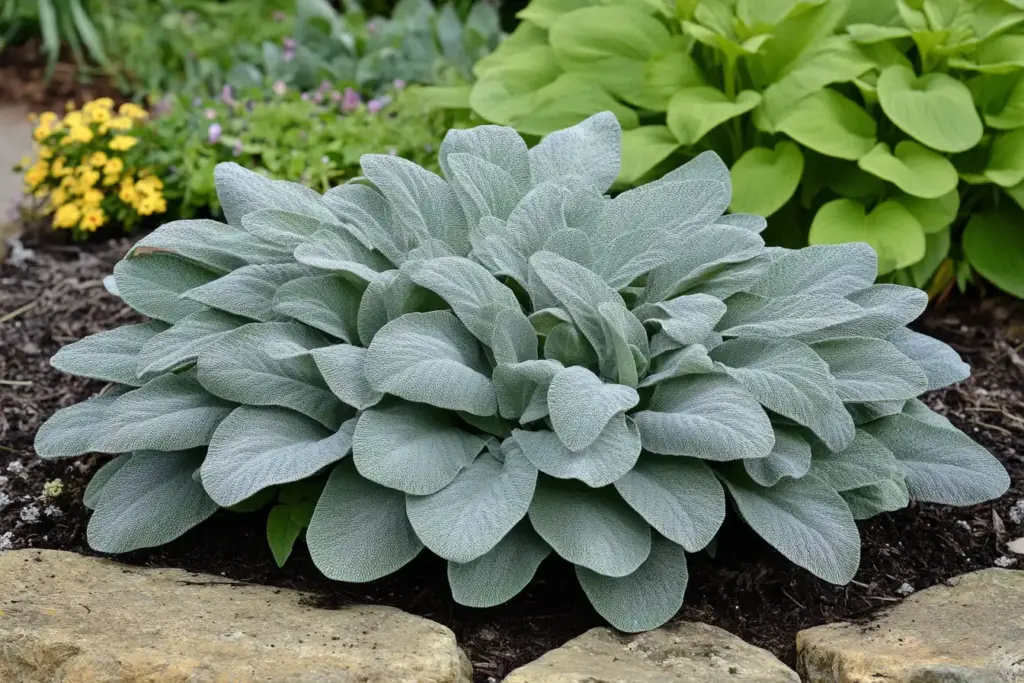
Primary benefits: Silvery texture, drought tolerance, kid-friendly softness
USDA Zones: 4–8
Lamb’s Ear is a garden favorite, especially for adding texture and contrast. Its fuzzy, velvety leaves are as soft as their namesake, making them a hit in sensory gardens and children’s spaces. These hardy perennials form dense mats that crowd out weeds and shine in full sun.
Why it shines:
- Drought-tolerant and thrives in hot, dry conditions
- Silvery foliage brightens garden beds and borders
- Easy-care and spreads steadily without being aggressive
- Produces small purple flower spikes in summer (many gardeners snip them off to highlight the foliage)
Growing Tips:
- Requires well-draining soil
- Avoid high humidity and overwatering, which can lead to rot
- Performs well in full sun to part shade
Popular Varieties:
- ‘Big Ears’ – Bold, oversized leaves
- ‘Silver Carpet’ – A compact, non-flowering variety ideal for mass planting
- ‘Helene von Stein’ – Known for vigorous growth and durability
Perfect for: Borders, ground cover in dry zones, or anywhere you want to add visual softness.
🌺 5. Trailing Lantana (Lantana montevidensis)
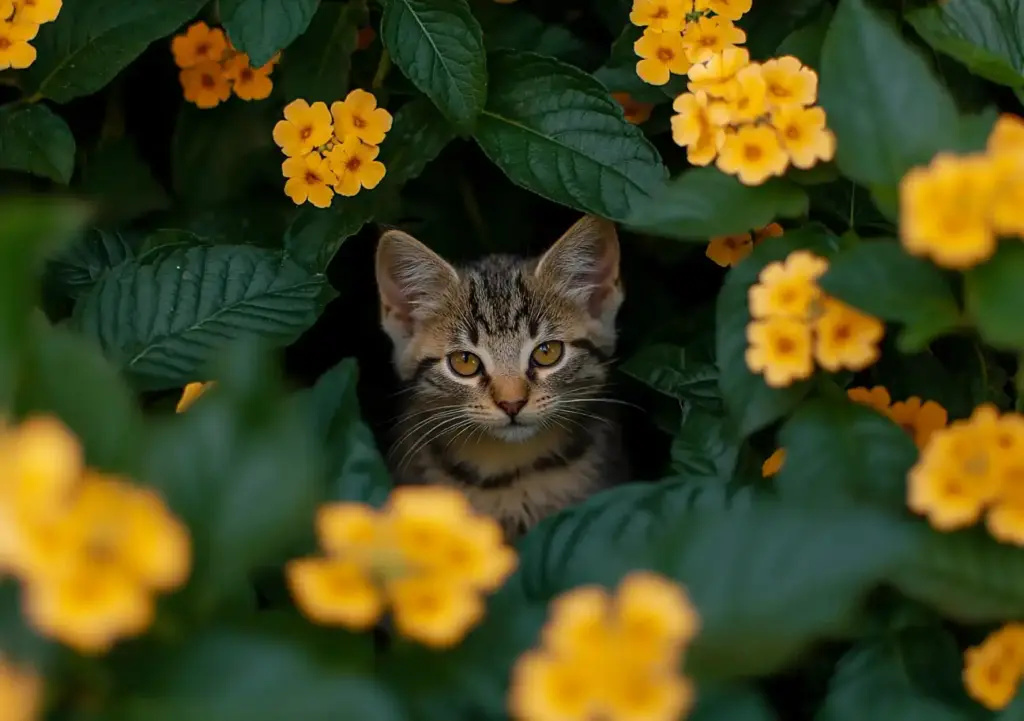
Primary benefits: Continuous color, heat and drought tolerance, fast coverage
USDA Zones: 9–11 (grown as an annual in cooler climates)
If you need a heat-hardy bloomer that doesn’t quit until frost, Trailing Lantana is a must-have. This fast-growing perennial produces clusters of small, vibrant flowers and gracefully spills over borders, slopes, and containers.
Why it shines:
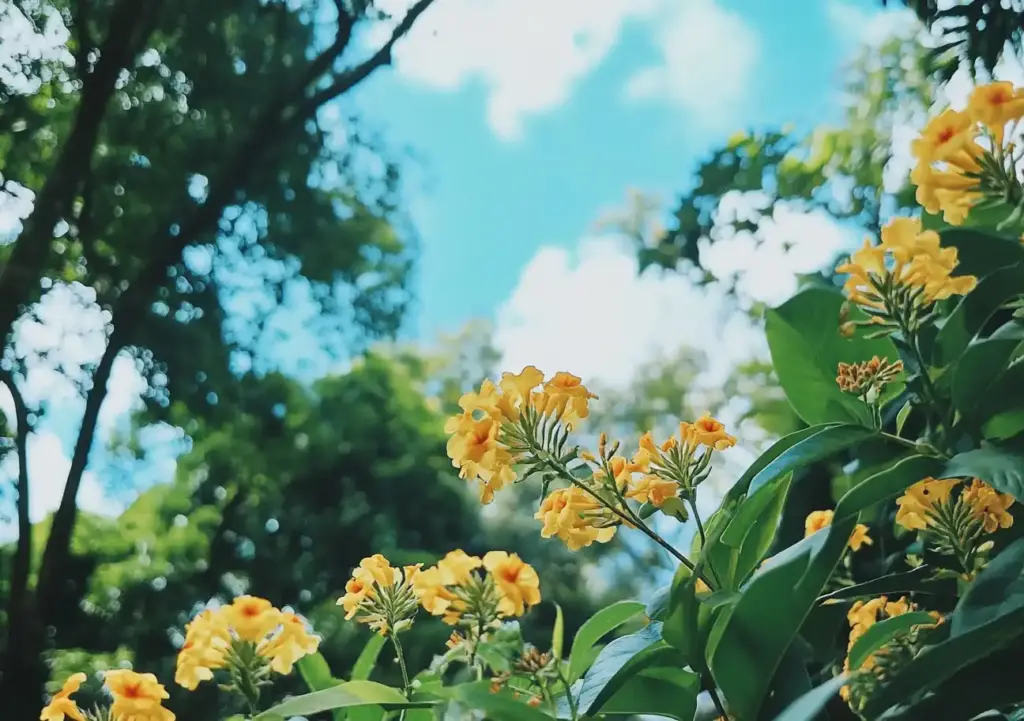
- Blooms nonstop from late spring through fall
- Tolerates drought, poor soil, and coastal conditions
- Great for erosion control on slopes or rocky areas
- Resistant to deer, disease, and pests
Growing Tips:
- Needs full sun and well-draining soil
- Can be trimmed back to control its spread or encourage denser growth
- Performs well in containers, hanging baskets, and mass plantings
Top Varieties:
- ‘New Gold’ – Bright yellow flowers and lush foliage
- ‘Lavender Swirl’ – Soft purple and white bicolor blooms
- ‘Trailing Light Pink’ – Pale pink blooms with a trailing habit
Best use cases: Ground cover for hillsides, sprawling color in xeriscapes, or sunny patios needing a floral cascade.
🪻 6. Creeping Thyme (Thymus serpyllum and other species)
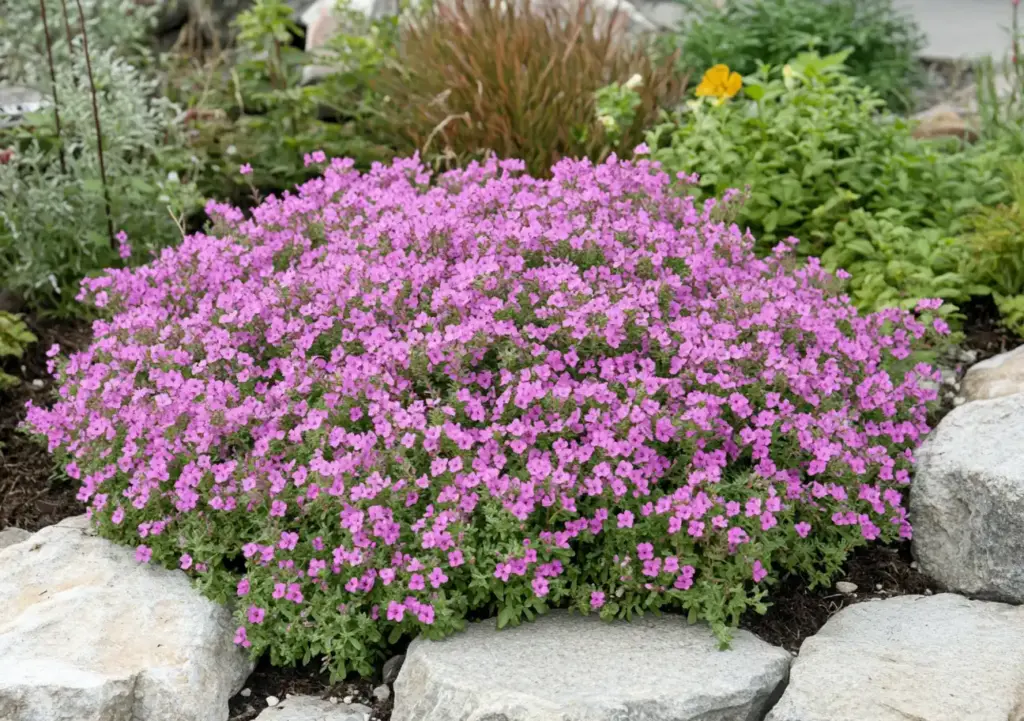
Primary benefits: Fragrance, pollinator-friendly, foot traffic tolerant
USDA Zones: 4–9
Looking for a ground cover that smells amazing and can handle a little foot traffic? Creeping Thyme is a superstar in sunny gardens. This low-growing perennial herb forms dense, fragrant mats that flower beautifully and resist heat with ease.
Why it shines:
- Evergreen foliage stays attractive year-round
- Bursts into pink, purple, or white flowers in summer
- Attracts pollinators like bees and butterflies
- Resilient against drought, foot traffic, and poor soil
Growing Tips:
- Needs full sun and sharp drainage
- Once established, it’s nearly maintenance-free
- Perfect for between pavers, in rock gardens, or as a living mulch
Popular Varieties:
- ‘Pink Chintz’ – Salmon-pink blooms and early flowering
- ‘Coccineus’ – Vibrant magenta flowers with a spreading habit
- ‘Aureus’ – Golden foliage for a unique twist
Perfect for: Walkways, gravel gardens, sunny slopes, or anywhere you want a low, fragrant carpet that thrives in heat.
🌲 7. Creeping Juniper (Juniperus horizontalis)
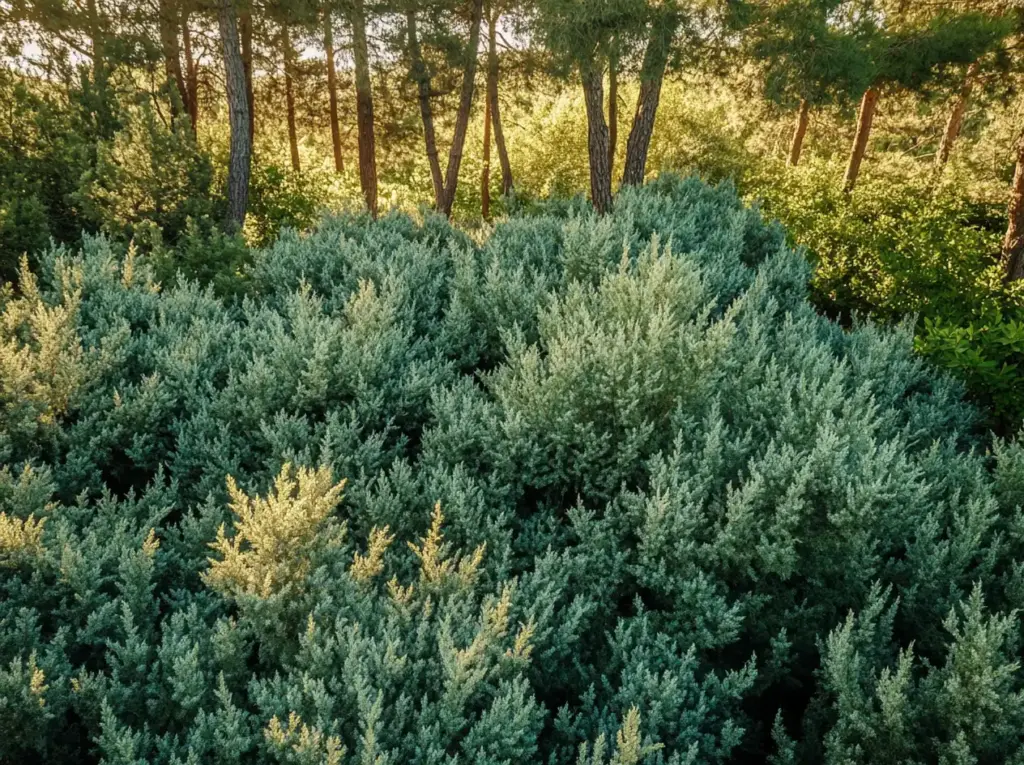
Primary benefits: Evergreen coverage, erosion control, drought and cold resistance
USDA Zones: 3–9
For a rugged and reliable ground cover that handles both heat and cold, Creeping Juniper is a top-tier choice. This low-growing evergreen forms wide, dense mats of needle-like foliage, offering year-round color and structure.
Why it shines:
- Spreads up to 6–8 feet wide while staying under 18 inches tall
- Tolerates poor soil, drought, and rocky conditions
- Evergreen needles offer four-season interest—shifting in hue with the seasons
- Highly effective on slopes or banks for erosion control
Growing Tips:
- Requires full sun and well-draining soil
- Once established, it’s extremely low maintenance
- Avoid overly humid or shady areas to prevent mildew
Popular Varieties:
- ‘Blue Rug’ – Silvery-blue foliage that hugs the ground
- ‘Wiltonii’ – Dense, bright green ground hugger
- ‘Green Carpet’ – Deep emerald tones with excellent spread
Best for: Slopes, retaining walls, dry hillsides, or large sunny areas where you want a tough, tidy, evergreen groundcover.
🌿 8. Sedum (Sedum spp.)
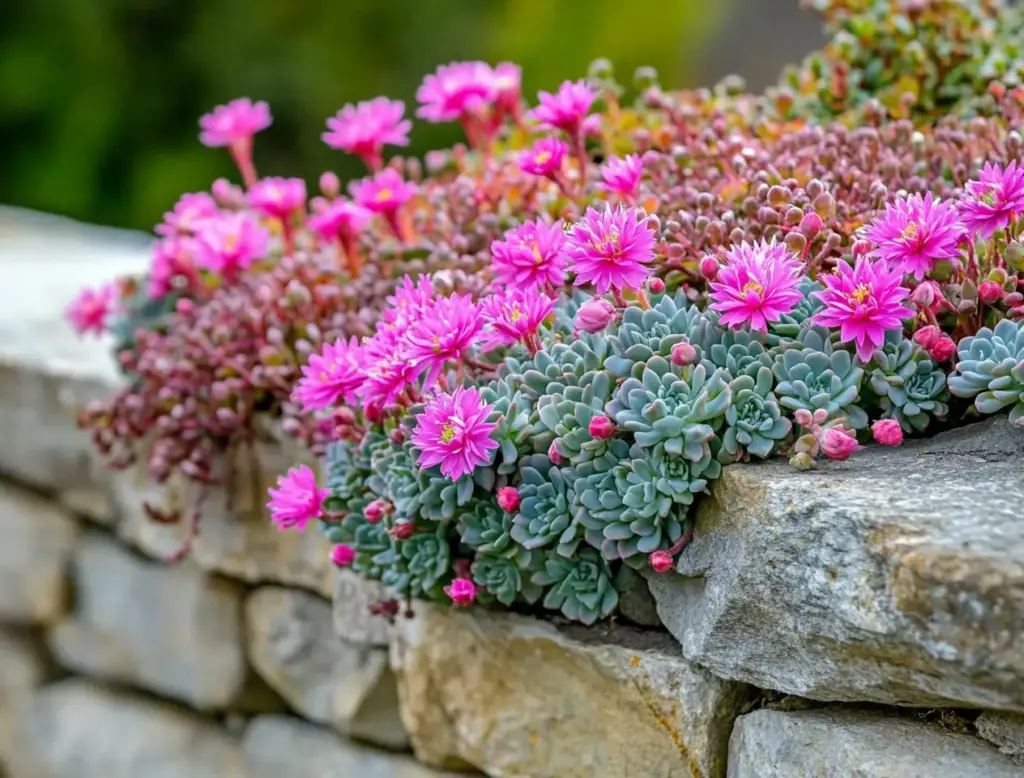
Primary benefits: Drought resistance, pollinator magnet, year-round appeal
USDA Zones: 3–9
Sedum, also known as stonecrop, is one of the most resilient ground covers for hot, dry conditions. These succulent perennials come in a variety of heights and colors, forming sprawling mats or compact mounds that burst into late-season bloom.
Why it shines:
- Thick, fleshy leaves store water—perfect for drought-prone gardens
- Blooms from late summer into fall with clusters of pink, red, or golden flowers
- Attracts bees, butterflies, and other beneficial insects
- Handles poor soil and requires minimal watering
Growing Tips:
- Needs full sun and well-drained soil
- Can thrive in containers, rock gardens, or rooftop gardens
- Trim back in spring to encourage fresh, dense growth
Popular Varieties:
- ‘Autumn Joy’ – Upright form with soft pink flower heads
- ‘Dragon’s Blood’ – Ground-hugging with red blooms and foliage
- ‘Blue Spruce’ – Silvery-blue needle-like leaves for texture
Perfect for: Water-wise gardens, sunny borders, and spaces where reliable color and texture are needed with minimal care.
❄️ 9. Snow-in-Summer (Cerastium tomentosum)
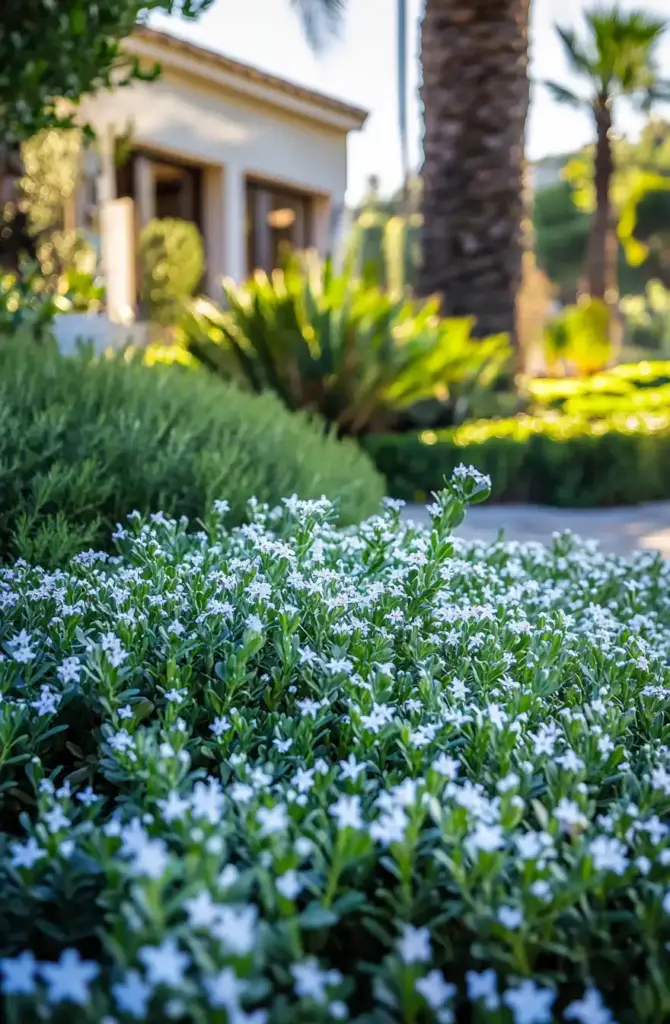
Primary benefits: Silvery foliage, early blooms, excellent for slopes
USDA Zones: 3–7
If you want your garden to sparkle—even in the heat—Snow-in-Summer offers a stunning combination of silver-gray foliage and bright white flowers that resemble drifts of snow. It’s especially great for rocky or hard-to-plant areas where other ground covers might struggle.
Why it shines:
- Blooms in late spring to early summer with clusters of small white flowers
- Silvery, woolly leaves provide year-round visual interest
- Spreads quickly to form a soft, dense mat under 6 inches tall
- Handles poor, dry soil with ease
Growing Tips:

- Thrives in full sun with excellent drainage—especially in winter
- Cut back after flowering to encourage a tidy shape and prevent re-seeding
- Avoid planting in overly fertile or moist soil to maintain compact form
Notable Cultivars:
- ‘Yo-Yo’ – Compact and tidy with strong flower coverage
- ‘Silver Carpet’ – Dense, low-growing, with thick woolly leaves
Ideal for: Rock gardens, borders, sunny slopes, or cascading over retaining walls where you want brightness and contrast without a fuss.
🌞 10. Gazania (Gazania rigens)
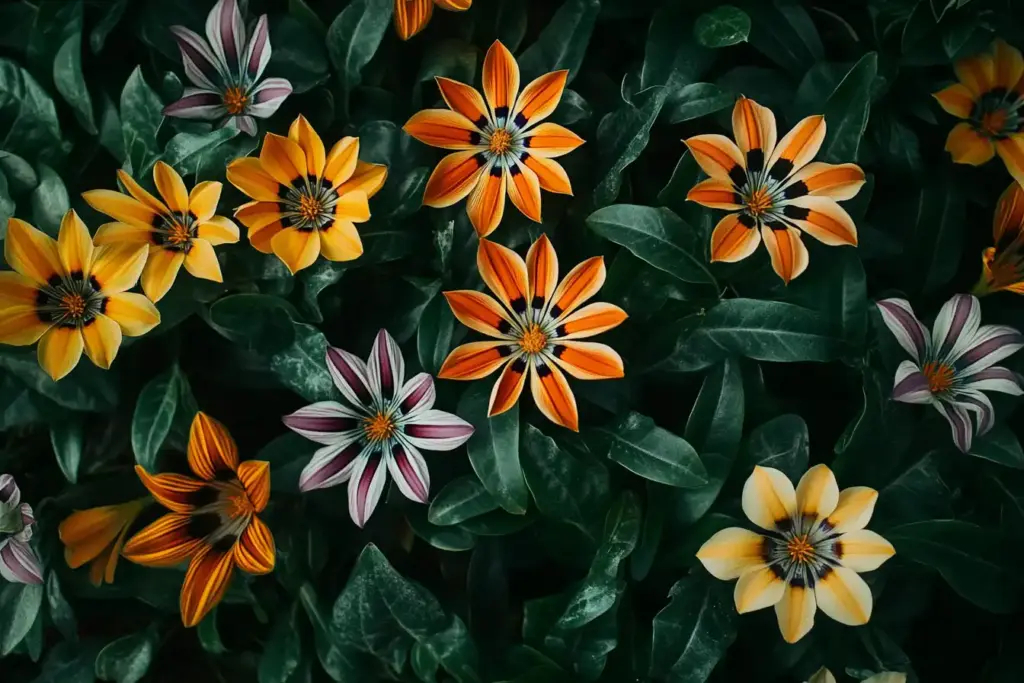
Primary benefits: Bold color, heat resistance, long blooming season
USDA Zones: 9–11 (grown as an annual in cooler regions)
Gazania, sometimes called Treasure Flower, brings an explosion of color to even the hottest, driest corners of your garden. These low-growing beauties thrive in full sun, producing large, daisy-like flowers that close at night and reopen with the morning light—a playful feature that adds charm to any landscape.
Why it shines:
- Blooms continuously from early summer to frost in brilliant shades of orange, yellow, pink, and cream
- Silvery-green foliage with woolly undersides helps retain moisture and resist heat
- Requires little watering and thrives in poor, sandy soil
- Deer- and pest-resistant for stress-free gardening
Growing Tips:
- Loves full sun and sharp drainage
- Excellent for containers, curbside strips, or slopes
- Treat as an annual in colder zones, or perennial in warm climates
Popular Varieties:
- ‘Big Kiss Yellow’ – Large, bold golden blooms
- ‘New Day Bronze’ – Warm copper-orange petals with a dark center
- ‘Sunbathers’ Series – Compact, weather-tough, and floriferous
Great for: Adding vibrant, long-lasting color to hot spots with minimal effort—perfect for xeriscapes and coastal gardens alike.
🌟 Conclusion: Beautify Sunny Spaces with the Right Ground Covers
When it comes to landscaping areas that bake in the sun, the right ground cover plants for full sun and heat can transform challenging spots into thriving, low-maintenance garden highlights. From the shimmering foliage of Snow-in-Summer to the cheerful blooms of Gazania, these heat-tolerant champions bring lasting color, texture, and ecological benefits to your outdoor spaces.
Whether you’re covering slopes, filling gaps, or replacing thirsty lawns, choosing ground covers that love the sun means less watering, fewer weeds, and more time enjoying your garden. With so many beautiful, resilient options, you’re sure to find the perfect plant—or combination—for your landscape needs.

